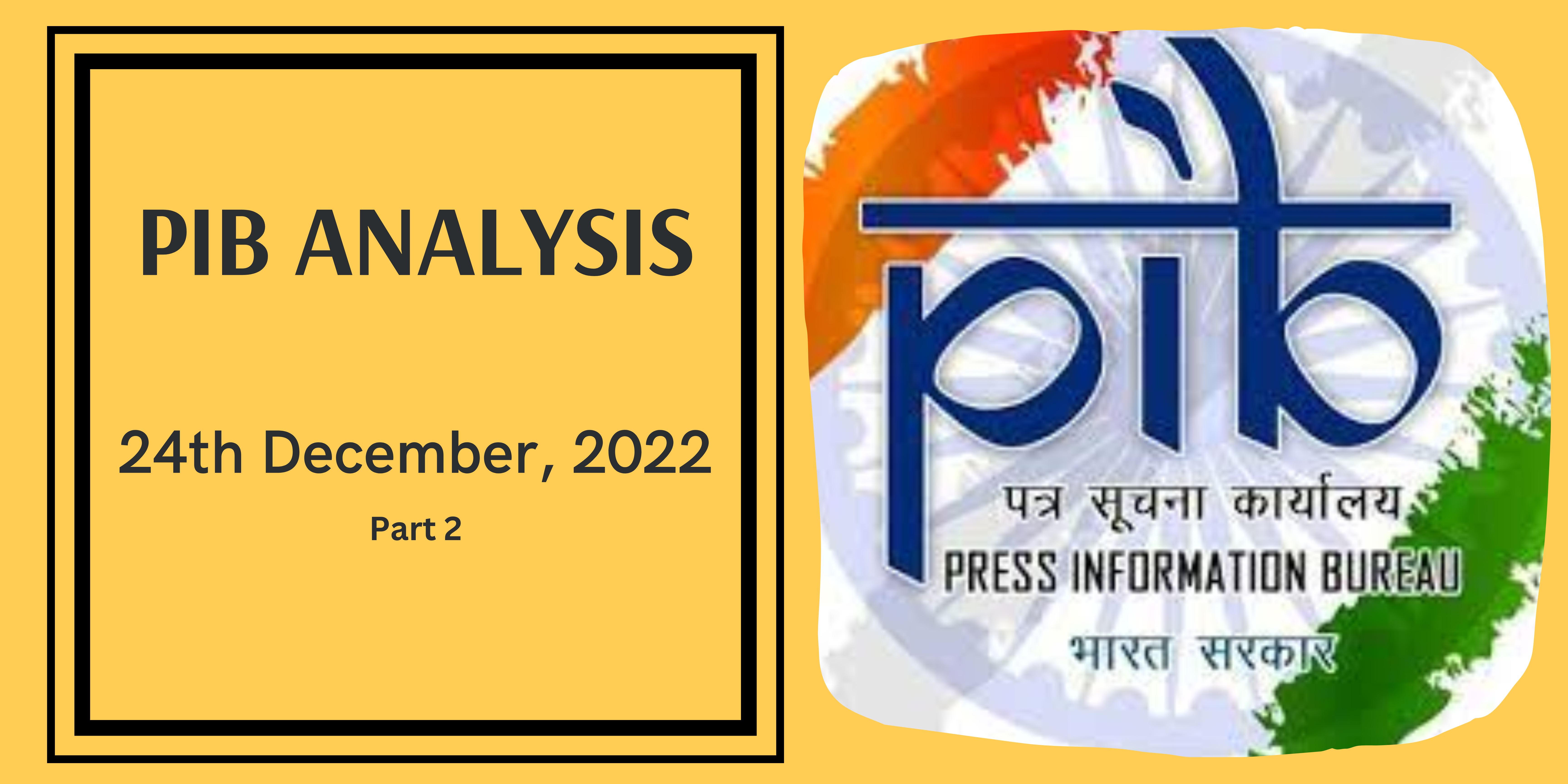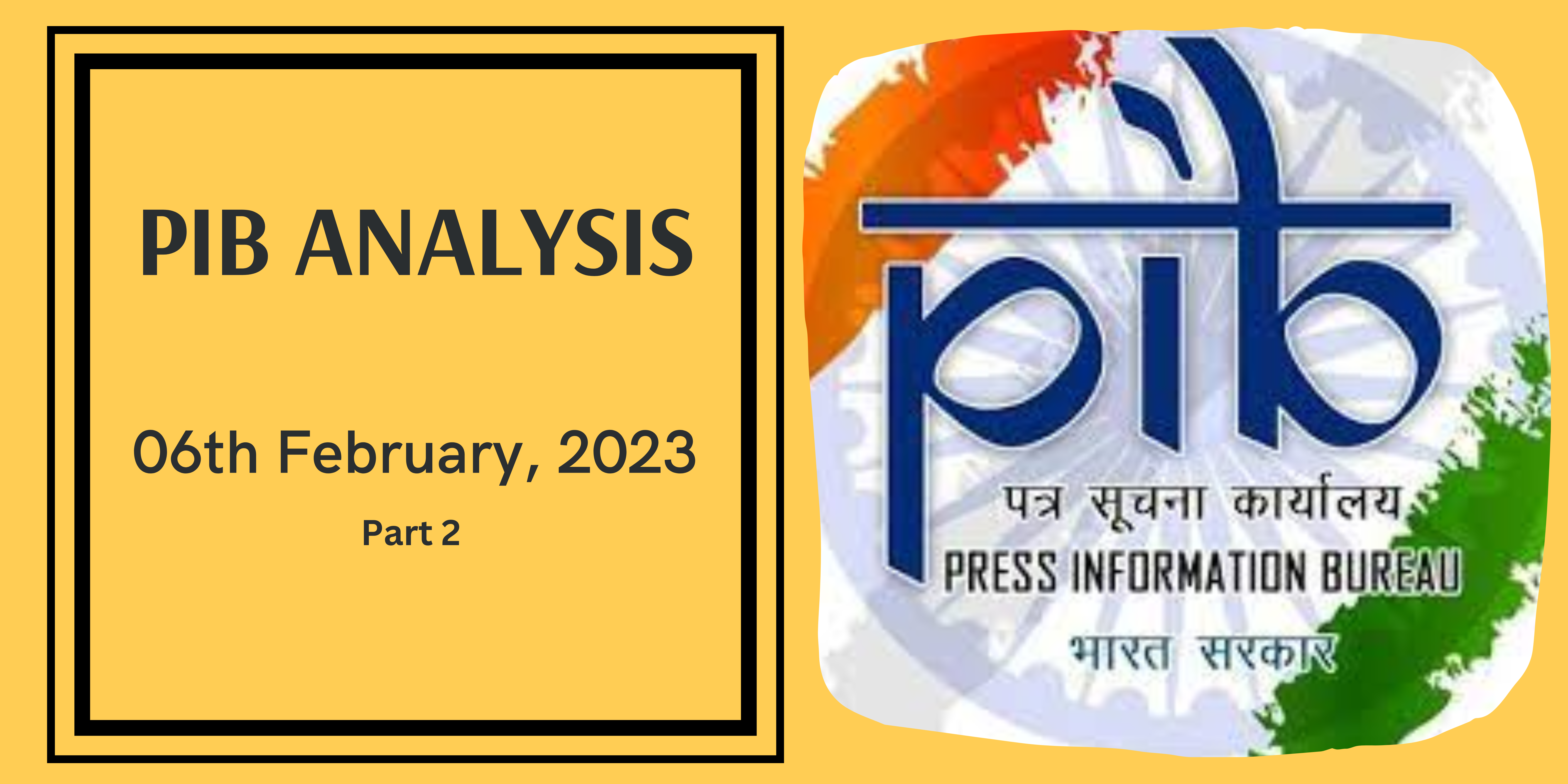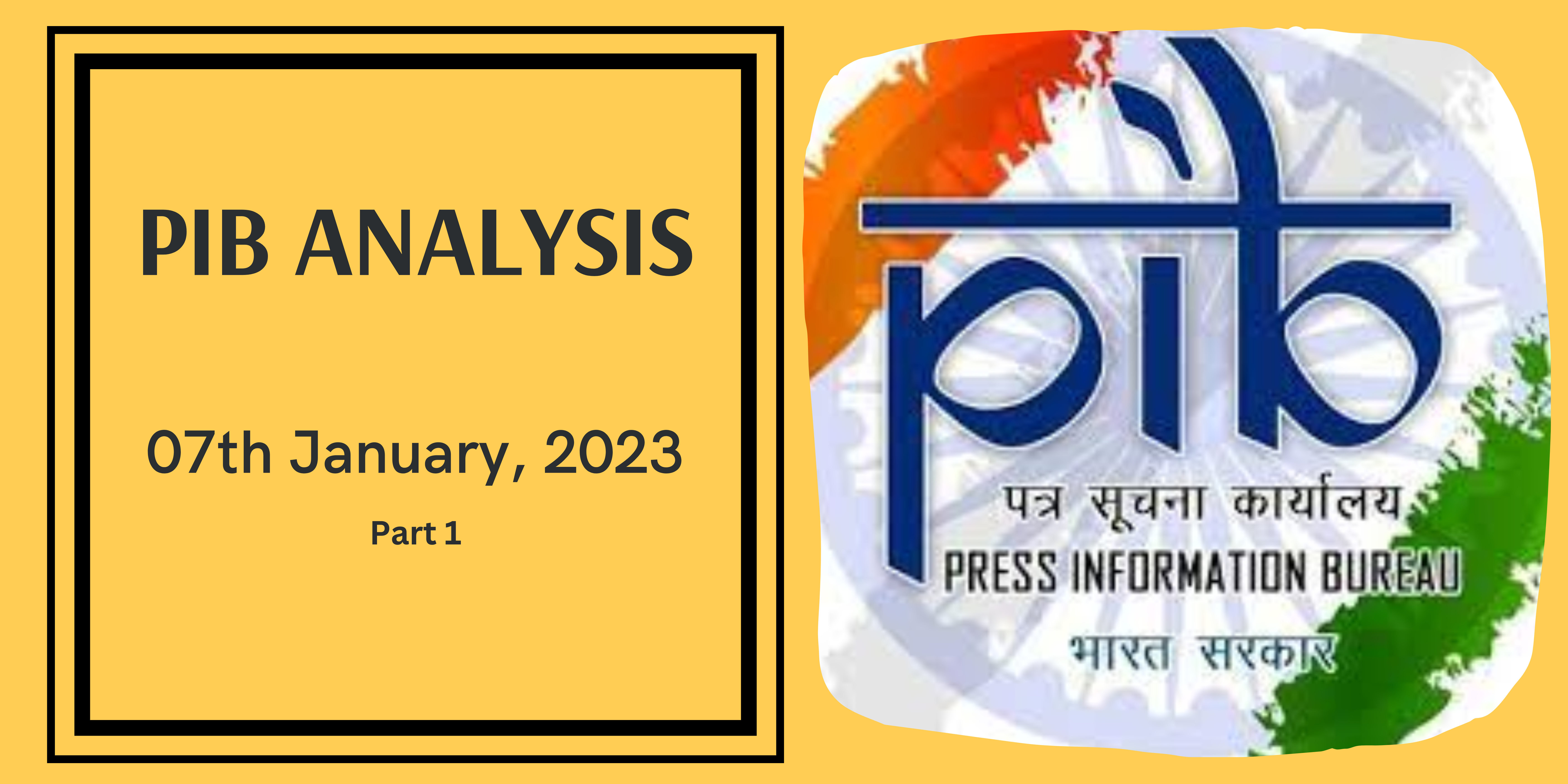PIB Analysis 24-12-22 – Part 2
Promotion of Digital Literacy
- India over the last 7 years has become a prominent nation in deploying technologies for the benefit and transforming the lives of its citizens.
- Keeping this in view, the Government is focusing on providing digital literacy to citizens across the country, especially in rural areas.
In line with this, Government has been taken various steps as under:
- During the years 2014 to 2016, Government of India had implemented two Schemes on providing digital literacy to the masses namely “National Digital Literacy Mission (NDLM)” and “Digital Saksharta Abhiyan (DISHA)” with a cumulative target of 52.50 lakh persons (one person from every eligible household) across the country including rural India. Under these two schemes, a total of 53.67 lakh beneficiaries were trained, out of which around 42% candidates were from rural India. Both schemes has been closed now.
- In the year 2017, Government was approved a Scheme titled ”Pradhan Mantri Gramin Digital Saksharta Abhiyan (PMGDISHA)” to usher in digital literacy in rural India with a target to cover 6 crore rural households (one person per household) across the country. So far, a total of more than 6.62 crore candidates have been enrolled and 5.68 crore have been trained, out of which 4.22 crore candidates have been duly certified under the PMGDISHA Scheme across the country.
Rashtriya Gokul Mission
- The Department of Animal Husbandry and Dairying is implementing Rashtriya Gokul Mission (RGM) for development and conservation of indigenous bovine breeds since December 2014.
- The scheme is important for enhancing milk production and productivity of bovines to meet the growing demand of milk and making dairying more remunerative for the rural farmers of the country.
- The scheme is continued under revised and realigned scheme of the Department from 2021-22 to 2025-26.
- Under the scheme Rashtriya Gokul Mission information on Nationwide Artificial Insemination Programme are uploaded online on Information Network on Animal Productivity and Health (INAPH) database and are followed up till calf born.
‘KAVACH’ System
- Indian Railways has indigenously developed an automatic train protection system rechristened as ‘Kavach’ (Train Collision Avoidance System), to prevent accidents due to human error resulting in Signal Passing at danger and over-speeding.
- So far, ‘Kavach’ has been deployed for 1,455 Route Kms on South Central Railway with 77 nos. of locomotives.
- Currently, ‘Kavach’ work is in progress on Delhi-Mumbai & Delhi –Howrah corridors (3000 route Kms).
- Other benefits of ‘Kavach’ include controlling speed of trains by automatic application of brakes on approach of turnouts, repeating of signal aspects in cab, which is useful for higher speeds & foggy weathers, and auto whistling at level crossing gates.
- At present ‘Kavach’ is being implemented on Indian Railways in a phased manner.




